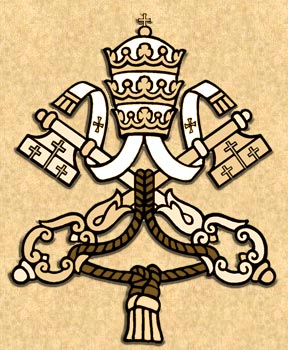
Biographical selection:
The cult to Our Lady was born in the East; from there also we received the feast of the Presentation of Our Lady, where it was celebrated from the end of the seventh century. In the West, Pope Gregory XI adopted the feast day in 1372 at the pontifical court of Avignon.
A year later, King Charles V introduced the feast of the Presentation at the royal Chapel in Paris. In a letter dated November 10, 1374 to the masters and students of the College of Navarre, he expressed his desire that such a feast should be celebrated throughout the kingdom. The text of the letter reads:
'Charles, by the grace of God King of France, to our dearly beloved: health in Him Who ceases not to honor His Mother on earth. '
'Among other objects of our solicitude, daily occupation, and diligent meditation, that which rightly occupies our first thoughts is that the Most Blessed Virgin and Holy Empress be honored by us with very great love, and praised as it is due. For it is our duty to glorify her, and we, who raise the eyes of our soul to her on high, know what a incomparable protectress she is to all, how powerful a mediatrix she is with her Blessed Son for those who honor her with a pure heart .... This is why we wish to stimulate our faithful people to celebrate this feast, as we ourselves intend to do by God's assistance every year of our life. We send to you the liturgy of said feast to increase your joy.' Such was the language of princes in those days. Then also at that very time, that wise and pious King, following up the work begun in Britigny by Our Lady of Chartres, rescued France from its fallen and dismembered condition.
Comments of Prof. Plinio:
In other words, the feast of the Presentation of Our Lady followed extraordinary historic circumstances. It was a Pope who introduced it in the West, and the King of France who spread it throughout his country. And from France it extended to the whole world. The King took up the feast to thank Our Lady of Chartres for her protection in the battle of Britigny, where the French army defeated its adversaries.
What does the feast of the Presentation celebrate? It celebrates the fact that the parents of Our Lady brought her to the Temple at the age of three and handed her over to live there for a long period as a virgin consecrated to the Temple, contemplating God exclusively.
What is the special beauty of this feast? Our Lady was the one chosen before time began, the Queen of Jesse from whom the Messiah would be born. The Temple was the only place in the Old Testament where sacrifices were offered to God. It represented, therefore, the only true religion. Our Lady being received at the Temple was the first step to the fulfillment of the promise that the Messiah would come to the true religion. It was the encounter of hope with reality.
When she was received at the Temple, Our Lady entered the service of God. That is, a soul incomparably holy entered the service of God. At that moment, notwithstanding the decadence of the nation of Israel, and even though the Temple had been transformed into a den of Pharisees, the Temple was filled with an incomparable light that was the sanctity of Our Lady.
It was in the Temple atmosphere that, without knowing it, she began to prepare herself to be the Mother of Our Lord Jesus Christ. It was there that she increased her love of God until she formed the ardent desire for the imminent coming of the Messiah. It was there that she asked God the honor to be the maidservant of His Mother. She did not know that she was the one chosen by God. This is so true that she wondered about the meaning of the salutation of the Archangel Gabriel when he greeted her to ask her permission for the Incarnation. That preparation for Our Lady to be the Mother of Jesus Christ began with the Presentation at the Temple, the feast the Church celebrates on November 21.
Is there a grace we should ask on this day? We should ask for spiritual help to be better prepared to serve God as Our Lady did. But the best way to serve God is to serve Our Lady herself. So, on this feast day we should re-present ourselves before Our Lady, asking her to receive our offer of service and to give us her assistance in the task of our sanctification, just as the Holy Ghost helped her at the Temple of Jerusalem.












